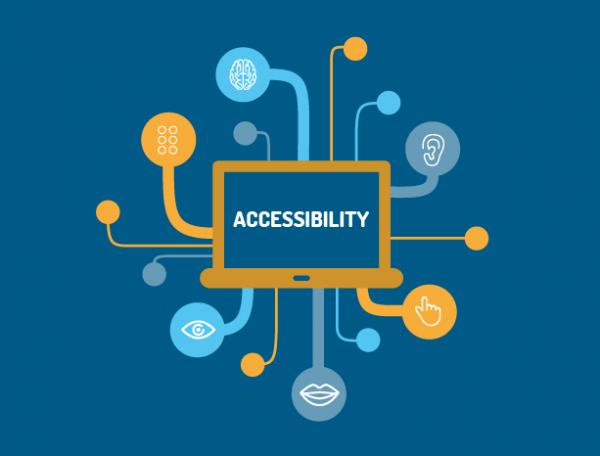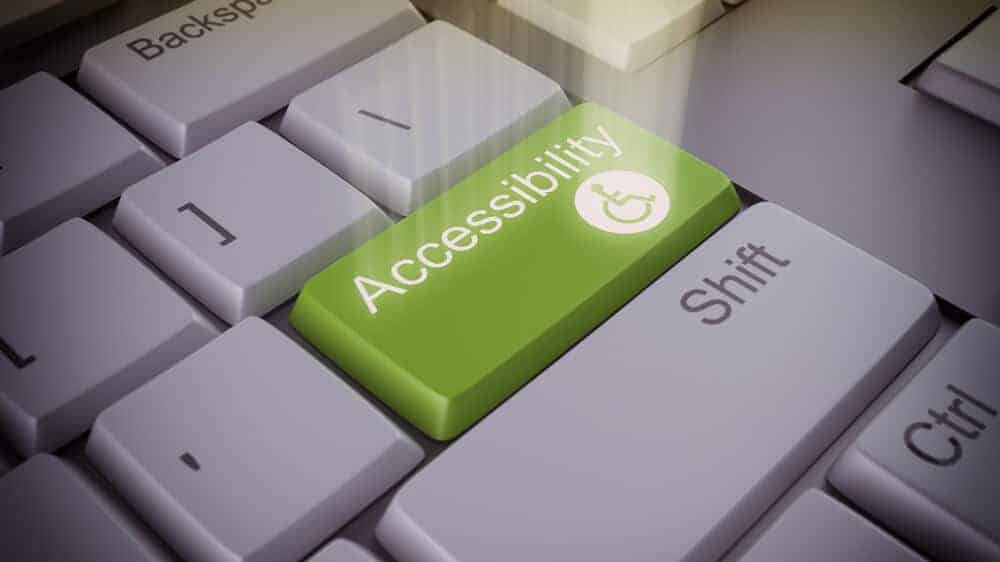With the attempts at digitization of the larger global and Indian society, the internet and through it the government websites have become an important interface between the citizens and their political representatives. Not only has digitization introduced a new sphere of governance i.e. e-governance, it has also opened up a new medium through which citizens can access information. Yet, the question of accessibility remains. Making the government websites accessible to citizens requires a consideration of the various socio-cultural factors such as caste, class, literacy and disability that can impede the accessibility of these digital websites.
In a society where the differently-abled are looked down upon and their disability is seen as a fated punishment and not an outcome of the society’s incapacity to accommodate their needs, their basic rights are denied on an everyday basis. In this light, it becomes important to assess the virtual accessibility of government websites especially for the differently-abled citizens who are systematically marginalized because of the ableist cultural and material construction of the mainstream society.

As a step towards ensuring virtual accessibility, the Guidelines for Indian Government Websites (GIGW) were adopted in 2009. These guidelines have been drawn on the basis of the international guidelines of accessibility called the ‘Web Content Accessibility Guidelines’ with the former being subject to revision in 2017. In line with the Web Content Accessibility Guidelines, the GIGW seeks to ensure that the websites and their content is operable and understandable. The guidelines state, “GIGW aims to ensure that people with disabilities can perceive, understand, navigate, interact and contribute through the Web. GIGW has been developed in accordance with W3C’s Web Content Accessibility Guidelines 2.0 which are internationally accepted standards on accessibility”. At the same time, the adoption of GIGW also becomes significant when seen in the light of the Rights of Persons with Disabilities Act, 2016. Section 40 of Chapter VII of the Act explicitly states “The Central Government shall, in accordance with the Chief Commissioner, formulate rules of persons with disabilities laying down the standards of accessibility for the physical environment, transportation, information and communications, including appropriate technologies and systems […]”.
Accordingly, the GIGW lay out certain standard rules to ensure virtual accessibility. These include offering alternative forms of CAPTCHA “using output modes for different types of sensory perceptions” in order to “accommodate different disabilities”; providing text equivalents to audio/video clips and making available audio versions of the video clips as well as images on the website and providing screen reader access on websites.
A 2011 study by The Centre for Internet and Society, by analysing and testing different websites has identified the problems of accessibility in each and has managed to elaborate on the deficiencies in the implementation of the GIGW. With no recent study on the virtual accessibility of government portals/websites for the differently-abled, it becomes difficult to gauge the extent to which things may have changed in a decade following the 2011 study.

Nonetheless, a cursory glance at the government portals and the website structures indicate that many of them explicitly state that they comply with the Guidelines for Indian Government Websites and provide screen reader access in their portals. At the same time, it must be noted that though they provide screen reader access and use of assistive technologies for the PwD, in actuality, it does not appear to be user-friendly, especially for those with visual impairments; the screen reader access is not in-built and directs the user to go to another external website and make use of external screen reader softwares. Furthermore, the accessing of the screen reader option itself becomes difficult because it needs to be located visually and clicked upon in order to be accessed. The Ministry of Education, The Ministry of Minority Affairs, The Rehabilitation Council of India, the Ministry of Social Justice and Empowerment, The Ministry of Women and Child Development, to name a few government websites, all have published accessibility statements on their portals and provide screen reader access to their websites for the visually impaired but the actual user-friendliness and accessibility of these websites for the differently-abled, especially those with visual impairments remains in question and doubt.
There is a need for a re-assessment of the virtual accessibility of government websites, especially for persons with disability. Furthermore, there is a need for surveys and analysis of the virtual accessibility and compliance with GIGW following the revisions made in 2017. Not only should the compliance with GIGW be checked based on the claims of the websites but also on the basis of the experiences of the people with disabilities in accessing these websites, using them and interacting with them.
Hunardeep Kaur is a third year student of English Literature at Lady Shri Ram College for Women, University of Delhi. She is interested in looking at the world through the lens of art, literature and culture. She finds solace in poetry and sunsets.



Greetings from Ohio! I’m bored to tears at work so I decided to browse your site on my iphone during lunch break. I enjoy the knowledge you provide here and can’t wait to take a look when I get home. I’m shocked at how quick your blog loaded on my phone .. I’m not even using WIFI, just 3G .. Anyhow, good site!
I like the helpful info you provide in your articles. I’ll bookmark your blog and check again here regularly. I’m quite certain I’ll learn plenty of new stuff right here! Good luck for the next!
Your style is so unique compared to many other people. Thank you for publishing when you have the opportunity,Guess I will just make this bookmarked.2
Thanks for any other informative site. The place else could I am getting that type of information written in such a perfect method? I have a undertaking that I’m just now working on, and I’ve been on the glance out for such info.
Nice post. I learn something totally new and challenging on websites I stumbleupon on a daily basis. It will always be interesting to read through content from other writers and use something from their websites.
Hello there, simply was alert to your blog through Google, and located that it’s really informative. I am gonna watch out for brussels. I’ll be grateful for those who continue this in future. Lots of other people will be benefited out of your writing. Cheers!
After I initially left a comment I appear to have clicked the -Notify me when new comments are added- checkbox and from now on each time a comment is added I recieve 4 emails with the same comment. Is there a means you can remove me from that service? Kudos!
A fascinating discussion is definitely worth comment. I think that you ought to write more on this issue, it may not be a taboo matter but typically people dont discuss these topics. To the next! All the best!!
Nice read, I just passed this onto a friend who was doing some research on that. And he just bought me lunch since I found it for him smile Thus let me rephrase that: Thanks for lunch!
I don’t even know how I ended up here, but I thought this post was good. I do not know who you are but definitely you are going to a famous blogger if you are not already 😉 Cheers!
My brother suggested I might like this website. He was totally right. This submit truly made my day. You can not imagine simply how much time I had spent for this info! Thank you!
Good write-up, I’m normal visitor of one’s web site, maintain up the nice operate, and It is going to be a regular visitor for a lengthy time.
It is best to take part in a contest for probably the greatest blogs on the web. I’ll advocate this website!
Having read this I thought it was very informative. I appreciate you taking the time and effort to put this article together. I once again find myself spending way to much time both reading and commenting. But so what, it was still worth it!
Spot on with this write-up, I actually think this web site wants much more consideration. I’ll most likely be again to learn much more, thanks for that info.